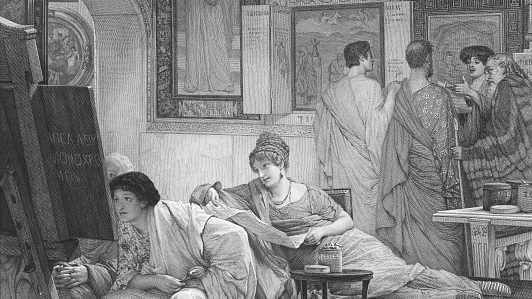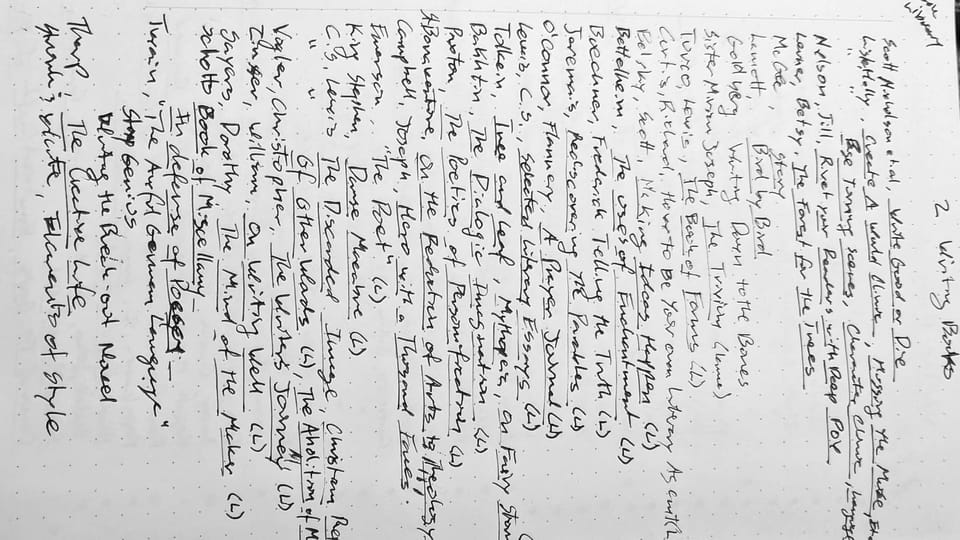Tool: Modulating Voice
Clark gives us the language to describe what is often seen as indescribable, the unique voice of each writer.

Welcome to Tools, the other half of the writing about writing about writing plan. In each of these articles we'll explore a tool from the book I reviewed in the prior week that I found particularly useful or interesting, sometimes drawing from several other books where I find connections. The hope is to catalog the best bits from the books I've read, and build connections between books. At the end of each tool I will suggest a few things you can do to incorporate or work on the tool described. They are typically things I am doing to incorporate the tool into my own practice. Use them or not as you will, though I hope you find this useful. As always, if you're subscribed you can leave a comment to let me know if you do.
In one of his chapters on Voice and Style in Murder Your Darlings Clark compares a writers voice to the "version of your amplified singing voice" transmitted through a microphone and sound system and modified by the various levers and knobs of the sound board. He credits this chapter to a summary of Ben Yagoda's The Sound on the Page but his identification of the various "levers" of voice appear to be mostly his own.
The various sliders he identifies are:
- Level of language - how high falutin or low brow is the language? What audience does the writing speak to naturally.
- Choice of person - First person? Omniscient? Second person?
- Source and range of allusion - who are you referencing? high culture? low culture?
- Density of metaphor - how often are they used and how dense are they?
- Sentence length and structure - how long, complex or varied are they?
- Distance from neutrality - objective or partisan? Opinionated?
- Inclusive to exclusive - is the writer bringing you in with their tone and language or shutting you out with jargon and dense prose.
- Conventional to experimental - is it what you'd expect in this context or something new and different?
- Original to derivative - is it imitating others? in a certain style? or a wholly original voice?
I found this metaphor of sliders or knobs for the qualities of voice particularly helpful in thinking about as I work on revisions to my current manuscript. Just having a list of qualities that a text can have is so useful for describing where a text is at and where you want it to be. That is the best tool Clark can give us, the language to describe what is often seen as indescribable, the unique voice of each writer. It gave me concrete ways to identify how I wanted my writing to sound, and how it sounded now.
So, is there anything that Clark missed on his list? Do you find this useful at all? Leave me a message in the comments or let me know how the tasks below suit you.
WORKSHOP:
- Close Reading: Pick a writer you admire and identify where their writing lies on each of the sliders above. Which of those qualities draws you to their writing? Do this for a few more writers. Are there any overlaps between them? Which of those qualities do you want to incorporate into your own writing?
- Drill: Pick a short piece of your own writing. Identify where it currently lies on the qualities above. Pick one of the sliders an try re-writing the piece. How does it change in tone and quality? Pick a different slider and try again. What stays the same about your writing no matter which level you pick?
- Challenge: Try to write a piece with qualities as opposed to your normal voice as possible on two or three of the above areas. For example: if you normally use almost no metaphor, write a piece dense with it. Or if you usually use short quick sentences, try to draw them out as long and languid as you can. How does this change the feeling of your prose?
Image Credit: Library of Congress, Prints & Photographs Division, U.S. News & World Report Magazine Collection, LC-DIG-ppmsca-86224



